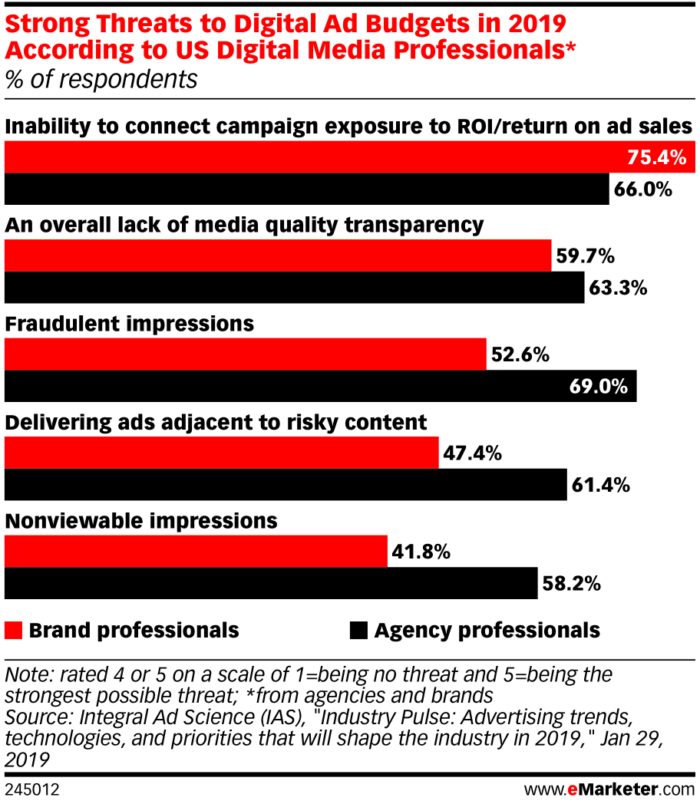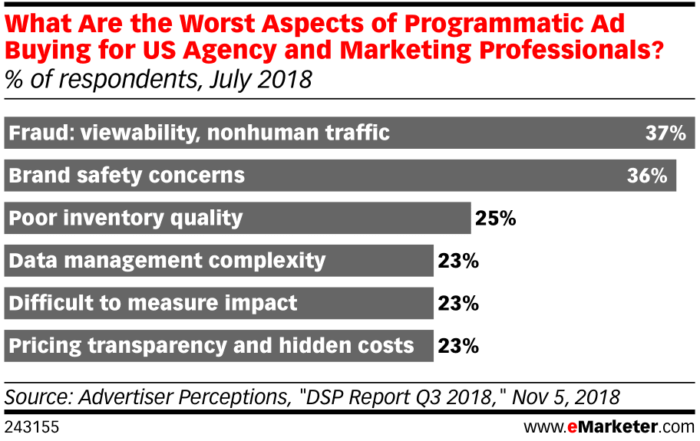It is estimated that this year ad fraud will see $5.8 billion from advertisers, showing the growing issue
It comes as no surprise that ad fraud has grown into an increasingly huge problem for brands and the digital advertising industry as a whole. This year alone, it is estimated that fraudsters will steal $5.8b from advertisers in a variety of different schemes that, despite the industry’s best defensive efforts, still manage to slip past the technology specifically designed to circumvent these growing issues.
As platforms such as audio and CTV/OTT become more and more in-demand for advertisers, the amount of fraudulent of illegitimate inventory is expanding in tandem, creating a seemingly defeated situation for strategies aimed at diminishing each of these loopholes.
Download our Free Resource – 10 costly Google Ads mistakes
The guide covers mistakes that many people make when using paid search advertising, for example, Google Ads.
Access the
It’s a veritable high-stakes game of Whac-a-Mole, with brands feeding billions of dollars into the coin slot in an attempt to keep up with both the latest developments in advertising technology, in addition to the defense techniques needed to combat the fraud developing in those growing verticals. However, trying to keep up with these changes without the proper resources or direction, can be like swimming against the current.
A perfect storm of fraud
The problem of ad fraud is a fusion of two primary forces:
- Buyers often fail to leverage third-party vendors that specialize in tracking and blocking fraudulent activity. This is especially true in open exchanges, where the volume is immense, and the action is fast, allowing for errors to simply slip through in the process. Spending the time, money, and effort to proactively mitigate those opportunities for fraud will cut into a brand’s profitability, and it is much easier (and more efficient) to just play the odds, hoping that most of the inventory will be legitimate at the cost of a small number of fakes.
- The pace of fraud is overwhelming. Much like the cybersecurity industry, for each step forward the good guys take, it seems like the bad guys take two more. Staying ahead of the schemes and tactics is a colossal task, especially as new platforms like virtual reality, voice-activation, and chatbot experiences grow in popularity. When brands lack the bandwidth and internal resources to combat these issues, it is impossible for them to be expected to keep up.

Don’t get trapped in the undertow
Although it may feel like a foregone conclusion—that paying for fraudulent ads is just part of the cost of doing business in today’s digital landscape—there are several ways in which brands can cut down on fraudulent ad spend and make sure they are getting access to the real, human audiences they need for their campaigns to truly succeed. Here are a few examples:
Use curated private marketplaces
By working with PMPs instead of open exchanges, advertisers can know exactly which publications their ads will be placed in, which provides a greater level of confidence that the inventory is actually legitimate. Because PMPs are invite-only, the publishers themselves are carefully screening advertisers, so it is clear they take the legitimacy of their inventory very seriously through these transparent practices.
The Interactive Advertising Bureau (IAB) has created the ads.txt standard as a way to prevent unauthorized inventory sales. Publishers include this text file on their web servers, listing all of the companies that are authorized to sell their inventory, while on the other side, programmatic platforms will list the publishers whose inventory they are authorized to sell.
This allows buyers to check the validity of the inventory they purchase in order to ensure that it is legitimate. While the requirement of ads.txt has yet to be enforced, choosing publishers and demand-side platforms (DSPs) that comply with ads.txt can significantly reduce the likelihood of fraud.
Use pre-bid segmentation and post-bid reporting
Pre-bid targeting or segmentation allows buyers to purchase inventory on exchanges based on specific segments, including viewability, brand safety, suspicious activity, content categories, anti-fraud, as well as many other parameters. These filter out any known or potential fraud, essentially allowing buyers to bid on “clean” inventory.
Post-bid reporting works on the other end of the transaction, showing buyers where ads have run so any adjustments can be made if any placements were inappropriate. Organizations such as MOAT, IAS, and DoubleVerify offer these options, and leveraging these tactics can help to reduce fraudulent spend while optimizing and improving legitimate ad placement along the way.

The industry is making progress
While the landscape will always continue to evolve, and the problem of fraud will not entirely go away anytime soon (if ever), it is important for brands to make reasonable and proactive efforts to avoid ad fraud in order to protect their budgets as well as their reputations in the digital advertising space.
The big vendors like IAS, DoubleVerify, and MOAT have made some great strides in the fight against fraud each year, and even the major DSPs have played a pivotal role in combating digital ad fraud by cutting fraudulent sources, even at the expense of their bottom line. But the reality is, there will always be individuals whose mission it is to stay one step ahead of emerging technology in order to find loopholes and then use those gaps in the system to exploit it.
The value of partnerships
Partnering with verification vendors and digital marketing platforms that make fighting fraud a main priority can give brands an advantage in reducing their exposure and vulnerability to fraud. Choosing a vendor that focuses on transparency is critical, and asking them to provide the metrics to validate those efforts is a reasonable and responsible request through such a partnership.
By leveraging premium partners and inventory sources who specialize in combatting fraud, some platforms have seen their involuntary traffic (IVT) drop by 60% and maintain an average of less than 2% IVT. Working with vendors who are willing to show you the fruits of their efforts can give you the confidence to expand your digital ad plan and strategically increase your spend, knowing that those dollars will go towards attracting a real, human audience to your business.
With 11+ years at the organization, Kevin Jones is one of the longest-serving members of the
Digital Remedy team. As Senior Director of Media Buying, Kevin works with advertisers to determine the best course of execution to achieve their digital KPIs. He specializes in analyzing the full picture of campaign success by managing inventory, strategic partnerships, and industry best practices to continuously optimize and deliver for clients.







